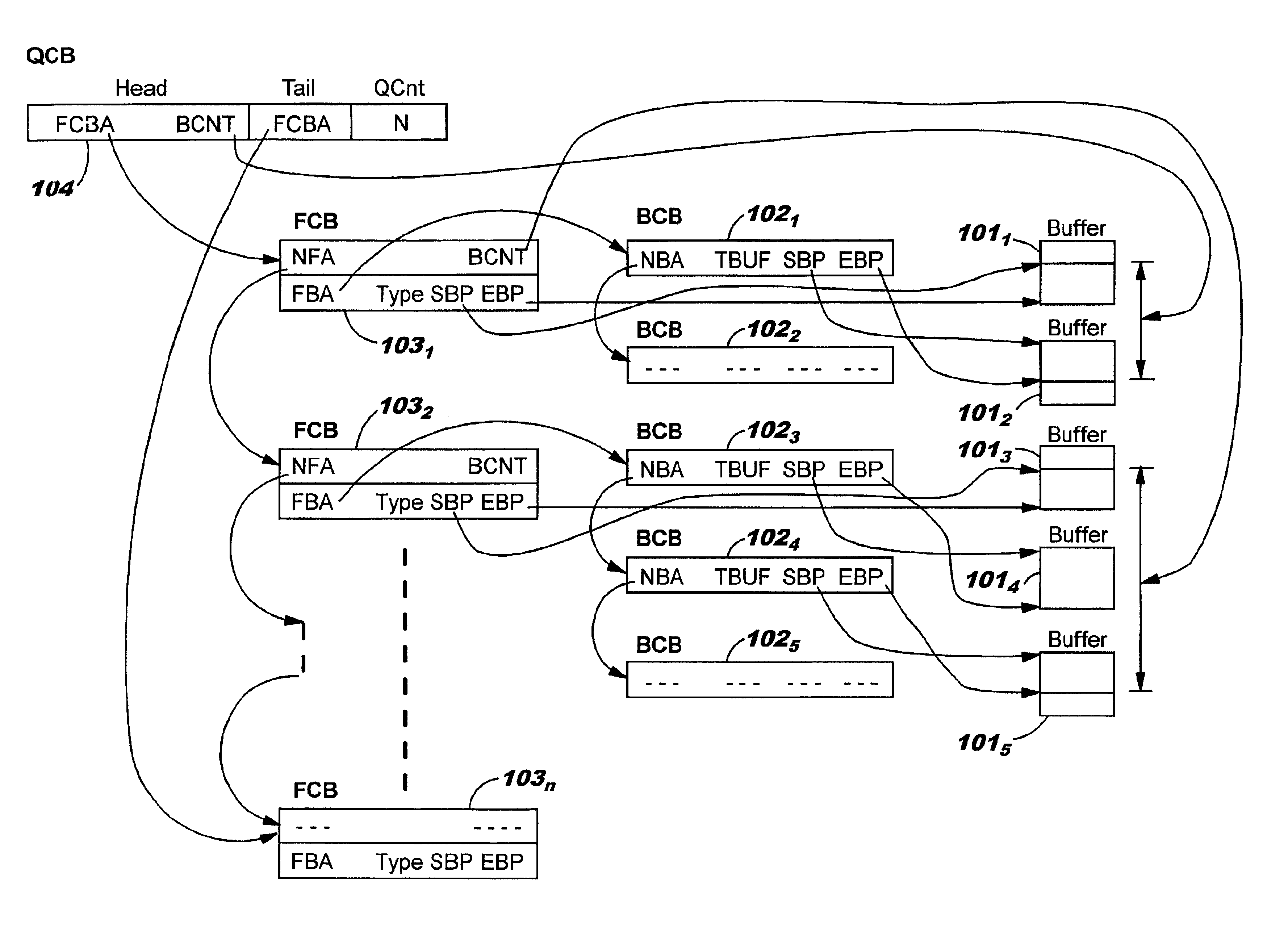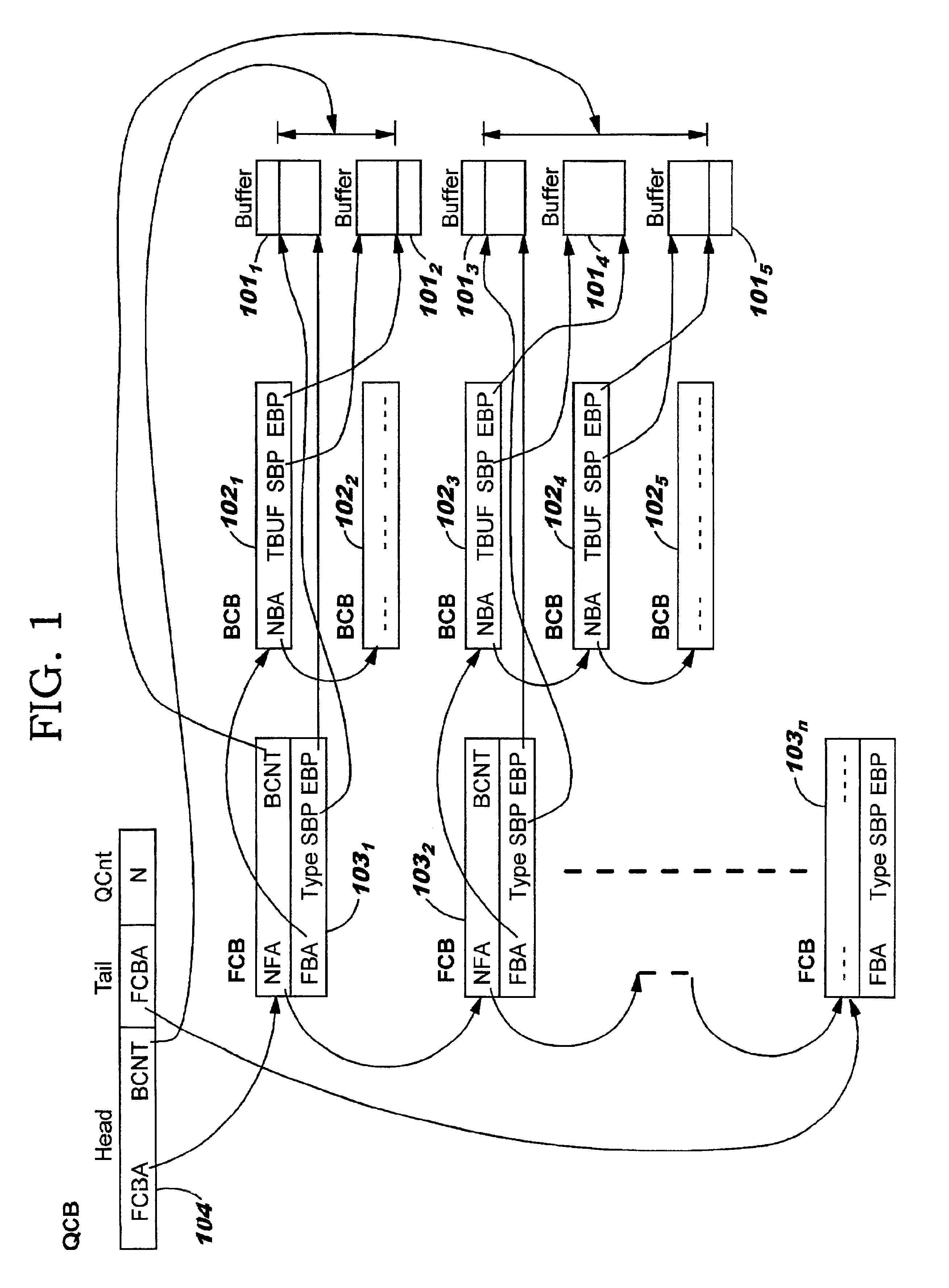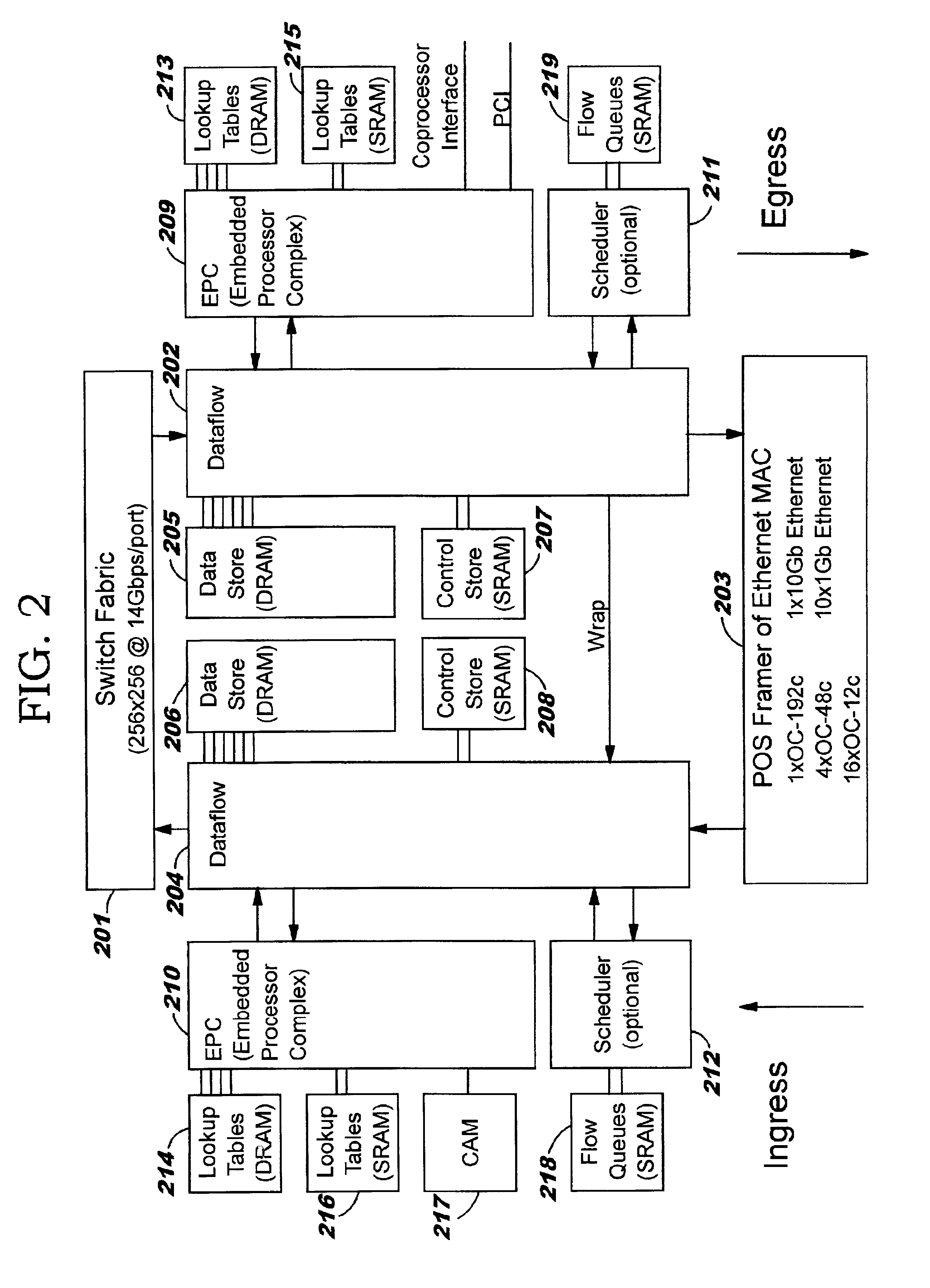Data structures for efficient processing of multicast transmissions
a multicast transmission and data structure technology, applied in data switching networks, data switching details, multiplex communication, etc., can solve problems such as burdening system performance, port performance discrepancies becoming issues that must be addressed, and one cannot simply return buffers after the starting frame has finished
- Summary
- Abstract
- Description
- Claims
- Application Information
AI Technical Summary
Benefits of technology
Problems solved by technology
Method used
Image
Examples
Embodiment Construction
Referring now to the drawings, and more particularly to FIG. 1, there is shown the data structures according to the invention. A frame is stored in a series of buffers 101.sub.1 to 101.sub.5. Each buffer 101 has a corresponding Buffer Control Block (BCB) 102.sub.1 to 102.sub.5, which is used to link the series of buffers into a frame. Each frame has a corresponding Frame Control Block (FCB) 103.sub.1 to 103.sub.n, which is used to link a series of frames into a queue. Each queue has a Queue Control Block (QCB) 104, which maintains the address of the first and last FCB 103 in the queue, and a count of the number of frames in the queue.
Data Structure Definitions
Buffers 101 are used for storage of data. Each buffer 101 is 64-bytes in size and may store from 1 to 64 bytes of valid data. All valid data within a buffer 101 must be stored as a single contiguous range of bytes. Multiple buffers are chained together via a linked list to store frames larger than 64-bytes.
Initially, all buffer...
PUM
 Login to View More
Login to View More Abstract
Description
Claims
Application Information
 Login to View More
Login to View More - R&D
- Intellectual Property
- Life Sciences
- Materials
- Tech Scout
- Unparalleled Data Quality
- Higher Quality Content
- 60% Fewer Hallucinations
Browse by: Latest US Patents, China's latest patents, Technical Efficacy Thesaurus, Application Domain, Technology Topic, Popular Technical Reports.
© 2025 PatSnap. All rights reserved.Legal|Privacy policy|Modern Slavery Act Transparency Statement|Sitemap|About US| Contact US: help@patsnap.com



